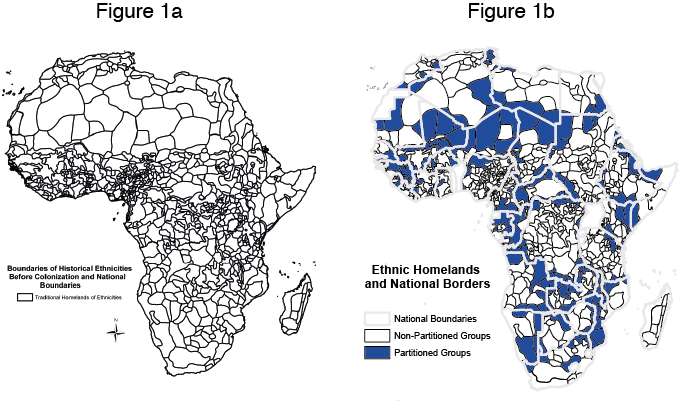This is the second and concluding piece outlining the main ideas of dynamical analysis. It is possible to read this piece on its own, but I recommend you read Part 1 the prequel first. The main topic here is Chaos, how it fits into dynamical analysis, and how it relates to economics. Before we get to that, a review of the story so far.
Quick Refresher
Dynamic systems are systems comprised of one or more variables. The rate of change of each variable is controlled by a formula. Dynamic systems can behave in very complex ways, and dynamical analysis is the decomposition of such a system into relatively simple components.
The graphic elements of a dynamical analysis are commonly displayed on a phase diagram, where the coordinates of every unique point on the diagram represent all possible unique states of the system. Over time a system changes, or evolves, and those changes appear as trajectories on the phase diagram.
In the last piece I defined ‘fixed points’ as states where the system has come to rest. I identified different types of fixed points (stable and unstable) and described how they could come into existence and be destroyed by system parameters in a process called bifurcation.
And so, onward…
Nonlinearity
In very broad terms the complexity of a dynamical system is limited by two factors: (a) the number of variables in the system, and (b) the nonlinearity of its controlling formulae.
Nonlinearity refers to a relationship between ‘rate of change’ and ‘state’ which is not just proportional (a straight line on a graph). This can be achieved mathematically by a number of means, the two most simple of which are: (a) when the rate of change a variable is proportional to the square of some variable state, or (b) when the rate of change of a variable is proportional to the product of two variables states. There are many other types of nonlinearity.
Limit Cycle
Limit cycles are another major component in dynamical analysis.
A limit cycle is a set of system states which form a closed loop on a phase diagram. Because each a state is only capable of evolving to one other state (uniqueness rule – see previous article), a system which inhabits a state inside a limit cycle is thereafter constrained to stay inside that limit cycle. So, for instance, once a frictionless pendulum has started swinging at some particular amplitude, it will continue to do so trapped in a limit cycle as follows.
Stable and Unstable Limit Cycles
Limit cycles – like fixed points – can be stable or unstable. In both cases, states on the limit cycle itself are constrained to stay on the loop, but trajectories close to a stable limit cycle will move toward that limit cycle (attractor) and trajectories close to an unstable limit cycle will move away from it (repeller).
This is a phase diagram showing a stable limit cycle (attractor) with trajectories near to the closed limit cycle.
Understanding what limit cycles are is an important stepping stone to understanding chaos, but they also describe many systems we see in the real world. Any system which exhibits simple harmonic motion can be assumed to have a stable limit cycle. For instance, any disturbance at all of a guitar string causes it to end up vibrating at a single frequency regardless of the nature of the original disturbance.
So chaos, then….
These days (alas) chaos theory is referred to by mathematicians as ‘complexity theory,’ but I’ll keep calling it chaos here. A chaotic (complex) system is one which satisfies the following three criteria: (Strogatz 1994)
The system must be Deterministic: No ‘random’ or external factors affecting system behaviour.
The system must be sensitive to initial conditions: Trajectories which start close to each other must separate at an increasing rate as time goes on. This is the condition which give rise to the famous butterfly effect.
The System must be ‘aperiodic’: There must exist trajectories which do not settle down to fixed points or fixed limit cycles. (So, ‘periodic’ – settling down to a steady state or sequence of states; ‘aperiodic’ – no settling down to a steady state or steady sequence of states.)
A number of nonlinear dynamic systems meet this criteria.
Strange Attractor
A strange attractor is a dynamical feature which gives rise to aperiodic behaviour. A strange attractor can be loosely (very loosely) thought of as a ‘soft’ limit cycle attractor. It is a set of states to which the system is constrained and attracted. But unlike a limit cycle a strange attractor is not a closed loop. Instead it winds round and round, constrained probabilistically within a fixed phase volume, but without EVER crossing or joining itself.
When a trajectory is captured by a strange attractor, its behaviour satisfies the requirement for ‘aperiodicity’ in chaotic systems.
Here is the now famous (in all the coolest circles) strange attractor from Lorenz’s model of fluid dynamics. (Lorenz 1963)
The volume within which the strange attractor is constrained is not sharply defined. As you zoom in on the volume’s surface, more and more detail is revealed, ad infinitum. Thus the surface has an infinite area (and is said to be ‘fractal’). The volume of a strange attractor cannot, therefore, be deterministically established. Nevertheless, if you trace the route of a trajectory inside the strange attractor, you can clearly visualize something we can reasonably call the strange attractor’s shape.
A strange attractor is an attractor because the system is drawn towards it in the same way it is drawn towards a stable fixed point or stable limit cycle.
Aperiodicity
Unlike a limit cycle, ‘movement’ inside the strange attractor – whilst superficially cyclic – never actually repeats itself. This has implications very relevant to economics and finance.
Chaos Theory establishes the notion that a non-repeating sequence can be the result of simple deterministic rules. Without the idea of chaos deterministically defined cyclic systems could only slavishly repeat themselves (e.g., sine waves). Non-repetitive elements in an otherwise cyclic system were presumed to result from ‘random’ factors. Chaos Theory shows that a system can be driven by simple rules under strict logic and still behave in a cyclic, but non-repeating fashion.
Economics is replete with imperfectly cyclical time series. Without Chaos, it is presumed that any imperfections – even the apparent cyclicity itself – results from external random factors. Prior to Chaos Theory, this view was difficult to counter, because only strictly repeating cyclicity could be modelled mathematically.
Nonlinear chaotic systems enable a mathematical and logical description of aperiodic systems. Furthermore, it turns out such systems can be described using a small number of intuitively satisfying formulae. The idea that the majority of all the complexity we see in the economy might be explained by just a few simple equations is naturally very appealing, since it allows us to describe systems where effects derive from a few primary causes.
Parameter drift determining whether a system is chaotic or not
In the same way that system parameters can determine the existence or otherwise of fixed points, they can also determine the existence of a strange attractor in a system. The presence of a strange attractor makes the system capable of chaotic behaviour. Parameter drift may destroy a strange attractor, rendering the system non-chaotic, or vice versa, create a strange attractor, making the system chaotic.
So that’s it for dynamical analysis. I have tried to stick to just the bits that might be used as metaphors for real world systems. The next time you read a paper which uses dynamic modeling, I hope you are surprised how much of it you can follow.
References
Steven H. Strogatz, Nonlinear Dynamics and Chaos, 1994, Westview Press, p. 232.
Edward N. Lorenz, “Deterministic Nonperiodic Flow,” 1963, Journal of the Atmospheric Sciences.
copyright 2015 Ted Carron


